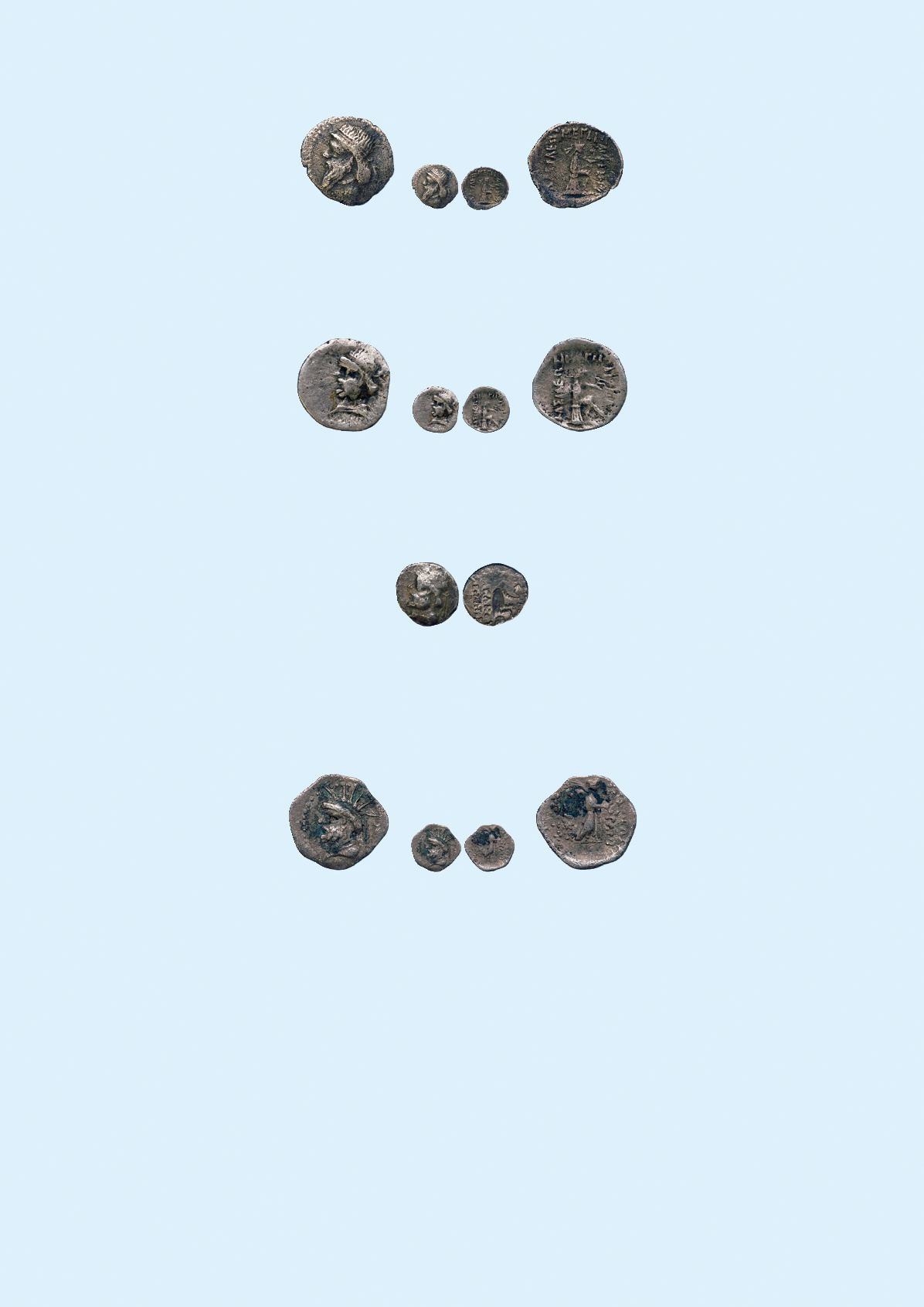
475
Mithradates I (164-132 BC), Silver Obol, 0.57g, 12h. Minted at Hekatompylos(?). Bare-headed, diademed and
bearded bust left, wearing single turn torque, dotted border. Rev. Archer seated right on omphalos, three-line
inscription
ΒΑΣΙΛΕΩΣ ΜΕΓΑΛΟY ΑΡΣΑΚΟY
(S 11.1). Good fine, toned.
Very
rare
.
$ 250
476
Phraates II (132-127 BC), Silver Obol, 0.49g, 12h. Minted at Ecbatana(?). Short-bearded and diademed bust
left, wearing single turn torque, dotted border. Rev. Archer seated right on omphalos, three-line inscription
ΒΑΣΙΛΕΩΣ
(left)
ΜΕΓΑΛΟY
(above)
ΑΡΣΑΚΟY
(left) (S 15.5). Good fine, toned.
Extremely rare.
$ 450
477
Phraates II (132-127 BC), Silver Hemidrachm, 2.33g, 12h. Minted at an uncertain workshop. Short-bearded
and diademed bust left, wearing single turn torque, dotted border. Rev. Archer seated right on omphalos, four-
line inscription
ΒΑΣΙΛΕΩΣ ΜΕΓΑΛΟY
(right)
ΑΡΣΑΚΟY ΘΕΟΠΑΤΟΡΟΣ
(left) (S 16.25 for Hemidrachm).
Fine, toned.
Extremely rare (possibly unique).
$ 280
478
Phraates II (132-127 BC), Silver Obol, 0.60g, 12h. Minted c.127 BC at Margiane (Merv) or Areia (Heart).
Short-bearded and diademed bust left, wearing radiate crown, single turn torque, dotted border. Rev. Nike
walking right, palm branch over left shoulder, semicircular talisman in outstretched right hand, four-line
inscription
ΒΑΣΙΛΕΩΣ ΜΕΓΑΛΟY
(right)
ΑΡΣΑΚΟY ΘΕΟΠΑΤΟΡΟΣ
(left) (S 16.25 var, different obverse
and reverse designs). Good fine, toned.
Extremely rare, one of only two known specimens.
$ 800
On the historical significance of this issue see: Sellwood D. G., “Parthians and Scythians” in Amal Kumar Jha and Sanjay Grag (eds.),
Ex Moneta. Essays on Numismatic, History and Archaeology in Honour of Dr. David W. MacDowell. Volume 1. New Delhi (1998),
97-102 [at 87, fig. 2 (this coin)].
Sellwood argues that the radiate crown worn by Phraates II on this issue would have looked familiar to the Greek captives from the
ill-fated expedition of Antiochus VII in 130 BC, ending with the defeat and death of the Seleucid king in 129 BC. At the same time,
the object carried by Nike, a semi-circular arc, was of great significance to the Scythian nomads living beyond Parthia’s northeast
frontiers, since it had a religion or regal implication for them. If these two aspects of the coin’s symbolism are correctly interpreted,
the fact that it was attempting to cater for the Greeks and the Sacae implies that they were both in Phraates’ employment at the same
time and so would not have been fighting against one another. This is in contradiction to the classical literary sources that attribute
the death of the Parthian king in 127 BC to the defection of the Greek captives to the Scythians against whom Phraates had waged
war in 129 BC.


